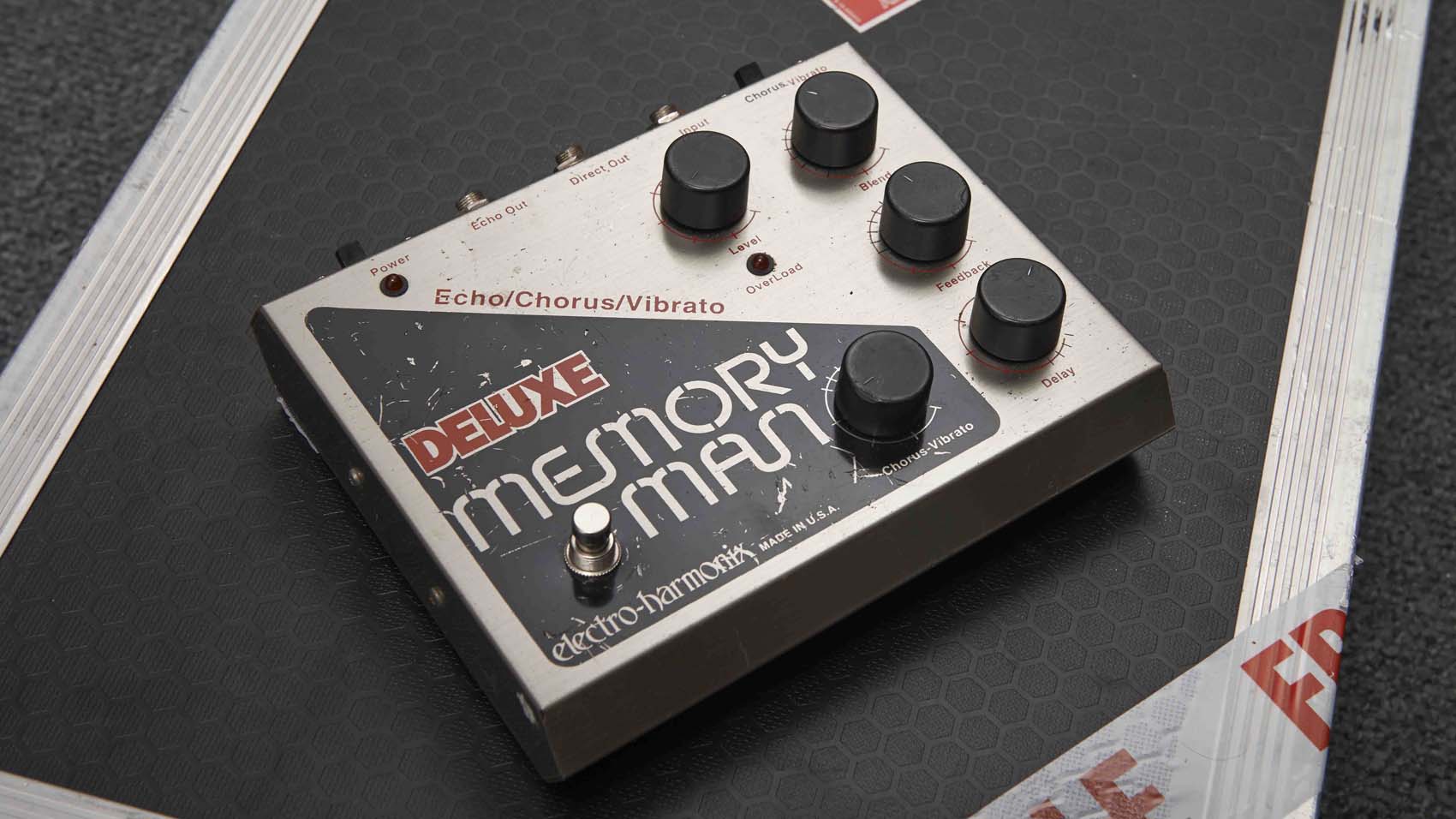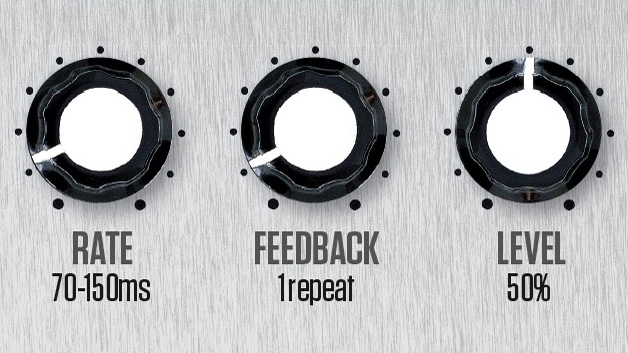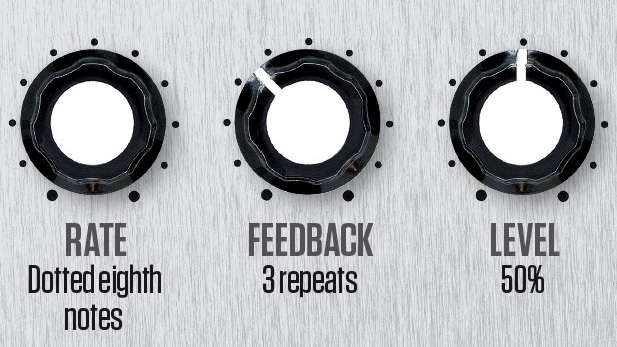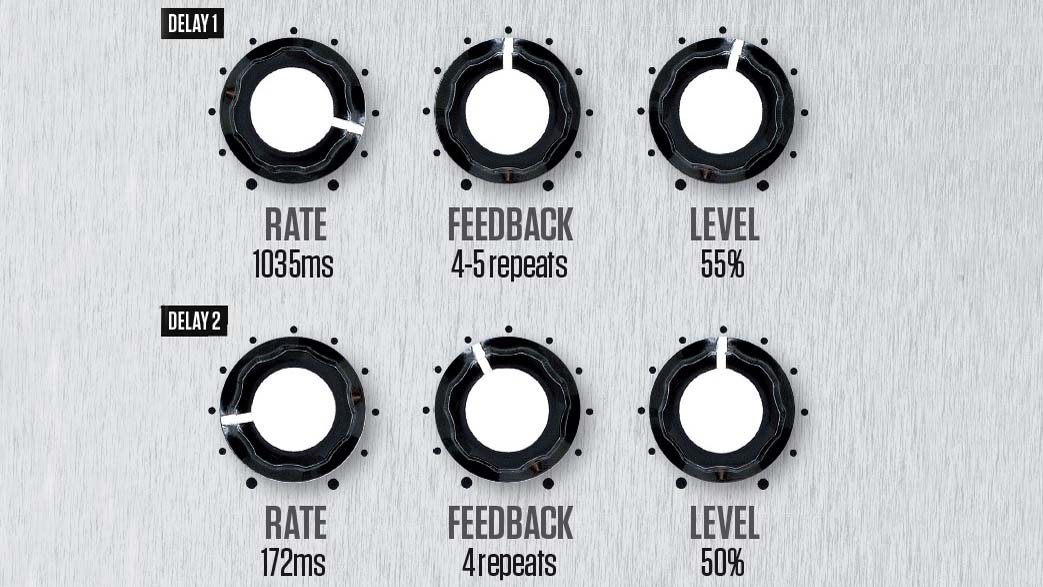How to create 3 classic delay sounds
Nail guitar tones from slapback to ambient - with audio examples

Take control
Delay can be so much more than just straight echo – here, we'll show you three different ways to take control of your repeats.
First up, controls. Most delays offer three main controls, but they aren’t always called the same thing. Here’s how to make sense of them…
Rate
This knob (aka Time or Delay) handles the length of time between your original note, and the repeated note from the effect. It’s often referred to in milliseconds, but some pedals allow you to set it by a note value (crotchets, quavers etc) in conjunction with a tap tempo switch to make setting the delay time easier.
Level
Sometimes referred to as the Mix, Blend or Effect control, this bad boy determines how loud the effected sound will be versus your guitar signal. It tends to work as a crossfader, so all the way to the left will give you your dry sound, all the way to the right will mean you’ll only hear the delayed notes, and 12 o’clock will give you equal volume of both.
Feedback
Some manufacturers call this ‘Regen’, others call it ‘Repeats’, but whatever you call it, it simply determines how many times you’ll hear an echoed note. Keep it low for tight single echoes, or whack it up for huge dubby oscillations.

Slapback delay
The classic rock ’n’ roll/rockabilly slapback sound became a trademark of Sun Records producer, Sam Phillips, who used multiple tape machines to create the short single repeats on Scotty Moore’s guitars, and Elvis’ vocals.
You’re best off using a tape-style delay setting, but you can achieve this sound with any pedal. Slapback needs to be snappy, so your delay times will be short – anywhere between 70–150 milliseconds. In addition, you’ll need to keep your repeats down to one, otherwise you’ll end up with a springy sound with too much overlap.
Adjust the repeat control until you’re only hearing one echo, then balance the level of your delayed sound and original signal so that they’re fairly even in volume.

Dotted eighth-note
The Edge’s unmistakable delay sound hinges around interweaving eighth-notes and dotted eighth-note rhythms. While regular eighth-note last for half a beat, a dotted eighth is half as long again (three-quarters of a beat). To create The Edge’s cascading rhythm, you simply have to mix the two.
The picking part is simple – you play straight ‘one-and-two-and’ eighth notes at your song’s tempo, but the repeats will occur during the gaps in your playing. Many delay pedals have a dotted-eighth mode that, when combined with a tap tempo, makes setting your rate easy, but don’t worry if yours doesn’t; it’s still easy enough to dial it in by ear.
The Edge’s delay is modulated, adding a slight gloss to the sound - if your pedal has a modulation setting, blend some in to taste. If not, you can replicate this part of the sound by putting a light chorus after your delay pedal.

Ambient dual-delay
If you have two delay pedals or a multi-effects capable of running two delays at once, you can create big ambient swells by contrasting two delay times – one short, one long – at the same time.
For our demo, we’ve used one long analogue-style digital delay set to 1,035 milliseconds, giving us a dotted quarter-note rhythm. The feedback control is set for quite a few (four or five) repeats to let the notes of our chord really run into each other. The level is set so that the repeats are slightly louder than the original signal, too, which helps fill space at slower tempos.
The second delay is set much shorter, at 172ms. This creates 16th notes at our tempo of 76bpm. Again, we’ve used an analogue sound to give repeat some grit, and pushed the feedback quite high to produce an oscillation that verges on feedback. The level is set at 50 per cent to avoid things getting too out of hand.
One key ingredient here is the use of a volume pedal or your guitar’s volume control to create the ‘swell’. This is done by cutting the volume completely when picking notes, then quickly rolling the volume up. Make sure you don’t lose the energy of your notes, but avoid the front-end attack. Roll it back before moving chords to keep string noise to a minimum.
Total Guitar is Europe's best-selling guitar magazine.
Every month we feature interviews with the biggest names and hottest new acts in guitar land, plus Guest Lessons from the stars.
Finally, our Rocked & Rated section is the place to go for reviews, round-ups and help setting up your guitars and gear.
Subscribe: http://bit.ly/totalguitar
